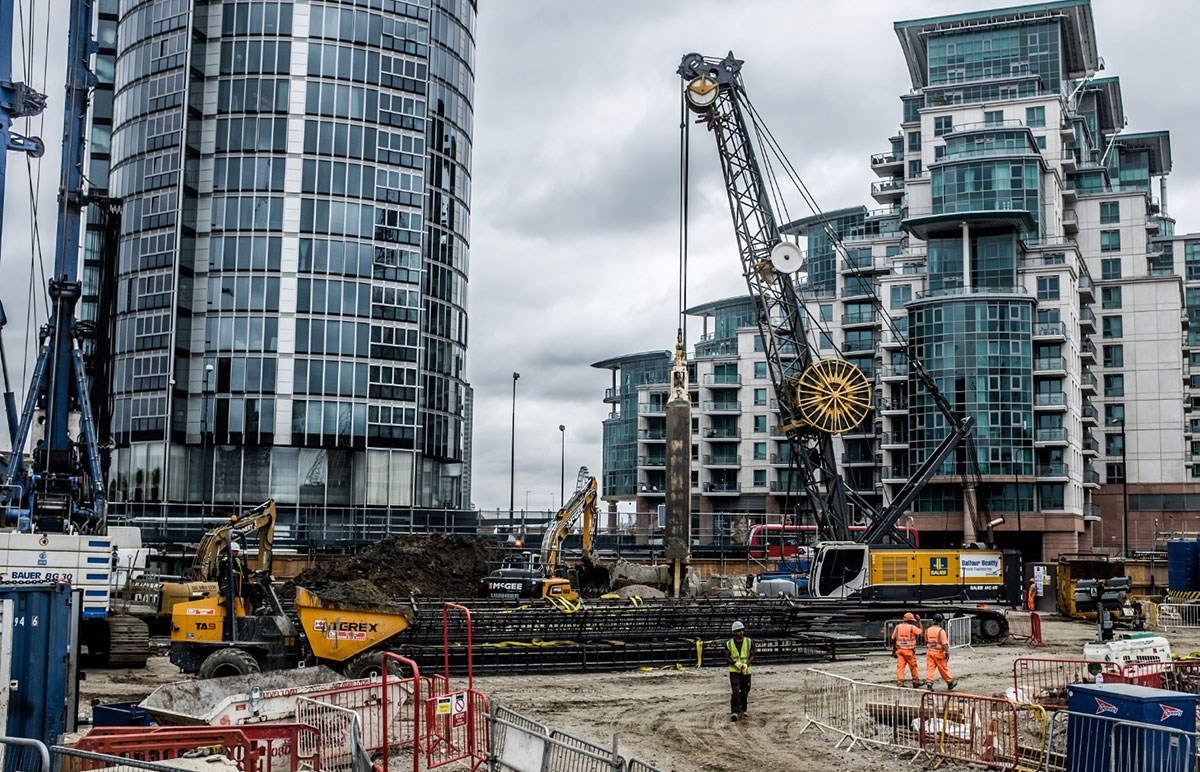The Main Principles Of Geotheta
Wiki Article
The 8-Second Trick For Geotheta
Table of ContentsThe smart Trick of Geotheta That Nobody is DiscussingThe 4-Minute Rule for GeothetaHow Geotheta can Save You Time, Stress, and Money.What Does Geotheta Mean?
They work together with civil engineers, architectural designers, engineers, and other specialists to incorporate geotechnical factors to consider into the overall job style and building and construction procedure. This calls for reliable teamwork, control, and interaction to make sure that the geotechnical elements straighten with the job goals and fulfill regulative demands.Mining & Materials Design: Principles of boring, penetration rates, and aspects impacting the choice of boring method. Qualities of explosives, firing systems and blast patterns. Blowing up techniques in surface and below ground operations. Unique blasting techniques at excavation borders. Resonance and sound control. Mechanical and constant methods to fragmentation, consisting of longwall shearing and fullface boring.
Integrated analysis of fragmentation and comminution operations. Offered by: Mining & Materials Engineering.
3 Simple Techniques For Geotheta
Bachelor's level programs in civil, geotechnical, geological, and ecological design commonly last four years and include basic education and learning programs in English, social scientific research, and the liberal arts, as well as courses in sophisticated maths, architectural geology, and liquid mineralogy. (https://gravatar.com/exactlypainterdeb7b76e1a)Geotechnical engineering entails the analysis of the soil and rock problems at a certain site, and their ramifications for the growth of that site. As a lot of frameworks rely upon the ground for assistance, it lacks shock that a comprehensive understanding of the ground problems, and the viability of structure systems, are important to the long-lasting stability and efficiency of the structure or framework.
Specialising in the examination of geological formations and ground behaviour, geotechnical engineers perform scientific examinations and testing to understand the influence these geological formations may have on the design and building of structure, civil and framework projects. This experience is important for the style and building and construction of structures, roadways, tunnels, dams, bridges, and water and sewer system.
The geotechnical team at Douglas Partners regularly seek advice from architects, layout designers, designers, and contractors to make suggestions on layout and advancement proposals to make certain that the developed structures are accordingly created for the ground problems. As an example, the layout of footing systems requires to think about the weight of the framework, the capability of the ground to support that weight together with motion resistances and effective building and construction.
Not known Incorrect Statements About Geotheta
This task is greatly simplified by the use our Douglas Map geospatial platform that makes this info readily easily accessible in a simple to make use of web browser user interface. A geotechnical engineer will certainly guide the drilling of boreholes and examination pits to collect soil and various other samples, and likewise evaluate surface published here area features and ground exposures to create a geotechnical design of the subsurface problems.Relying on the project type and ground problems encountered, lab testing might among various other points assess stamina, compressibility, reactivity and/or leaks in the structure of soil and rock examples. Hereafter data is gathered and looked at, the results are made use of for a geotechnical model of the site, which is generally offered as sections across the website.

A geotechnical investigation by nature can just analyze the ground conditions at the locations drilled or dug deep into. All-natural variants in soil and rock conditions can happen throughout a website and between examination locations. It is therefore excellent practice that the geotechnical engineer be kept throughout building of the job to supply on-site confirmation that the ground problems run into are consistent with the assumptions and recommendations given in the geotechnical examination record.
The Definitive Guide to Geotheta
Geotechnical designers use their thorough expertise of soil and rock to examine danger and resolve problems on diverse framework projectsGeotechnical design is a specialist branch of civil engineering which looks at the practices of planet products and the application of soil and rock mechanics. Tailings Engineer. As a geotechnical designer, you will assess the physical, mechanical and chemical properties of dirt and rock in order to create foundations, preserving frameworks and earthworksGeotechnical design is closely connected to and overlaps with, both engineering geology and ground design - https://geotheta.blog.ss-blog.jp/2024-08-02?1722614750. It's possible to specialise in geotechnics or benefit a geotechnical firm yet be called a design rock hound or a ground engineer. As a geotechnical engineer, you'll need to: construct and keep partnerships with customers and various other experts included in the site, throughout each projectmaintain safety and security criteria on website bear in mind price effects when you make recommendationsstudy geological maps and airborne photos from a series of resources and from different time periodsexamine construction intends to see just how practical they are based on your understanding of the siteinvestigate threats or geological threats for the sitesearch for eco sensitive attributes, such as land fill beginning to develop valid and interpretive ground modelsplan area investigationsdrill and analyse samples of bedrock, dirt, groundwater and extra materials supervise various other experts on sitesolve technological problems as they arise, such as unanticipated structures at drill sitesmonitor problems during and after construction to see to it structures are steady in the short and lengthy termadding information collected on website to your initial researchcreating geotechnical computations, illustrations, and two or three-dimensional computer system versions analyzing the datamaking recommendations concerning the proposed usage of the website

Report this wiki page